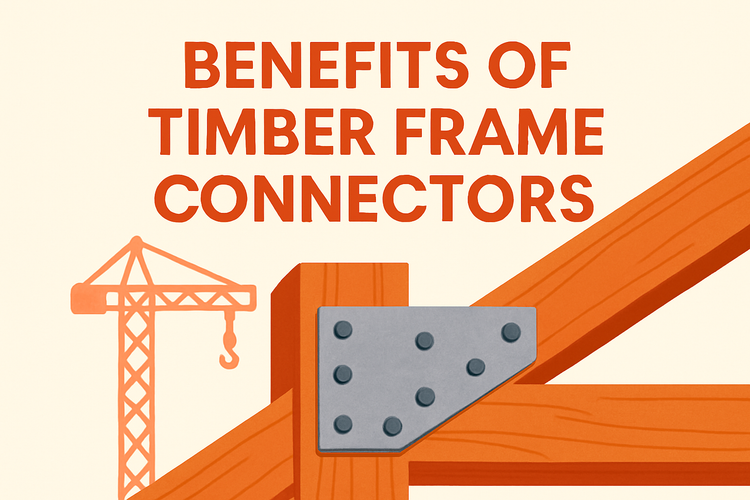Benefits Of Timber Frame Connectors In Construction

Increased Structural Stability
Timber frame connectors are integral to improving the structural integrity of wood-based construction. These connectors help ensure that timber joints remain secure under various loads.
Properly installed timber frame connectors distribute forces evenly across the structure, reducing the risk of joint movement or failure. Whether the construction involves residential buildings or larger commercial frameworks, connectors contribute significantly to the longevity and safety of the structure. Products such as timber frame connectors also help to reinforce the joints at critical stress points, especially in areas vulnerable to shifting or seismic activity.
By using connectors designed specifically for timber structures, contractors can meet performance standards without excessive material bulk. This modern approach to construction not only strengthens frames but also allows architects and engineers to design more creatively without compromising safety.
Time and Cost Efficiency
Incorporating timber frame connectors can significantly streamline the building process. Quick installation reduces labor hours and speeds up construction timelines.
These connectors are engineered for ease of use, often coming pre-drilled or contoured to fit standard timber sizes. As a result, on-site adjustments are minimized, which decreases the likelihood of delay or error. When paired with high-quality screws and nails, they ensure fast and accurate placement during framing.
Economically, choosing well-designed connectors makes long-term financial sense. They require less maintenance over time and reduce the risk of structural repairs, saving on future costs. Moreover, their uniformity allows for predictable material and labor costs during the planning stages of any build.
Flexible Design Options
Timber frame connectors offer flexibility for architects and builders seeking both functionality and style. They accommodate various structural and aesthetic considerations.
With a wide variety of connector types—from angle brackets to specialty joist hangers—designers can select the most appropriate piece for each application. This is especially important when integrating unique timber features like exposed beams or cross-laminated timber panels.
Such flexibility also applies to contemporary architectural designs where minimalism and exposed hardware are part of the visual appeal. Connectors available in modern finishes and forms enhance the visual impact without compromising performance. The ability to maintain consistent aesthetics while meeting load-bearing needs makes these connectors vital in customized construction.
Furthermore, because timber can shrink or swell with environmental conditions, the adaptability of connectors ensures joints remain secure through these changes. This contributes to the enduring reliability of both traditional and modern constructions.
Enhanced Safety in Extreme Conditions
Buildings in high-wind or seismic regions benefit greatly from secure framing with timber connectors. These components add crucial support during environmental stress.
Specialized products, such as high wind ties & timber connectors, are designed to resist lateral forces and prevent displacement during storms or earthquakes. Their use in key structural points such as roof-to-wall or post-to-beam joints can drastically increase a building’s ability to withstand extreme conditions.
Proper anchoring and restraint are fundamental to this resilience. Connectors help tie the structure together as a single, cohesive unit, lowering the susceptibility to wind uplift or shifting foundations. Supplementary components like restraint straps also strengthen connection paths throughout the framework, enhancing overall building safety.
Ease of Maintenance and Replacement
One of the overlooked advantages of timber frame connectors is the ease with which they allow for inspection and replacement. Accessible installation points simplify long-term upkeep.
Over time, timber structures may require adjustments due to wear or movement. When using connectors, these modifications can be carried out without removing large sections of the structure. The modular nature of these parts means that individual connectors can be replaced or reinforced without major disruptions.
This aspect is particularly valuable in outdoor constructions or extensions where weather and time may lead to deterioration. Being able to isolate and service specific joints extends the life of the overall structure. Products such as post base connectors, which prevent direct wood-to-ground contact, also contribute to preserving timber from decay and rot, further reducing the need for major repairs.
Looking for a full range of structural options? Explore our timber frame connectors for high-performance solutions across roof, wall, and floor systems.
